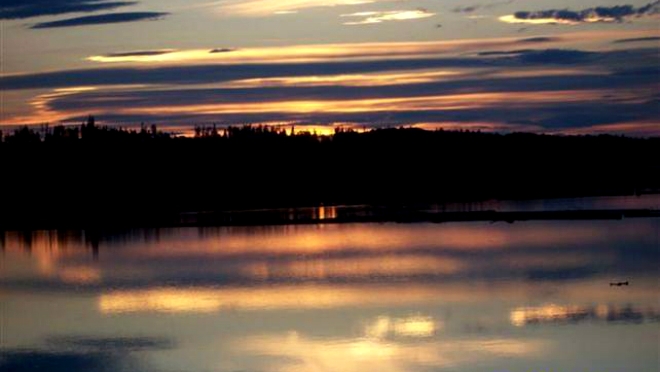Alexander Mackenzie's Landing

Site is long on history and recreational opportunities
On June 11, 1993, BC Hydro and the residents of Mackenzie dedicated this recreation site "Alexander Mackenzie's Landing" in recognition of the two hundredth anniversary of Alexander Mackenzie's historic journey.
The recreation area features a campground, picnic area, a sandy beach, a boat launch and access to hiking, boating, fishing and swimming.
Alexander Mackenzie's Landing is located on the traditional territory of Treaty 8 First Nations.
Where it is & things to do
Alexander Mackenzie's Landing is located eight kilometres by road from Mackenzie, B.C. Use this Google Map link for directions.
Open from May 15 to October 15, the facilities at Alexander Mackenzie's Landing include:
- 22-unit campground: Maximum of 14 nights camping per calendar year, and no reservation of sites is permitted. Campers failing to occupy sites overnight may have their equipment removed at their expense so that others may use the site.
- Sandy beach
- Single-wide boat launch
- Event seating area
- Four pit toilets
- Grassed open space
- Display signs and shelters
- Designated wheelchair-accessible sites and pit toilets
- Sorry, no drinking water
- Picnicking
- Hiking
- Motor boating
- Fishing
- Paddling
- Swimming
Safety & other visitor information
Reservoir operation combined with the natural and man-made characteristics of this reservoir can create hazards that are unique to Williston Reservoir. Water levels change seasonally.
Boaters are cautioned that snags and stumps may lie just below the surface at all water levels. Boaters should carry extra shear pins and a spare propeller. Floating and submerged debris may be encountered in all areas of the reservoir.
Weather conditions can change unexpectedly. Beware of high winds and quickly developing high waves. Waves greater than two metres are not uncommon on this reservoir.
Further information for boaters is available in the Williston Reservoir Boaters Guide, available at local BC Hydro offices and information centres.
During winter, the frozen surface of Williston Lake is hazardous. Extreme caution must be exercised. Winter hazards include pressure ridges, slush on the ice, gas holes, open water, broken shoreline, ice, rapid temperature changes, extreme cold and remoteness from help.
The current Williston Reservoir elevation may be found here.
- Camping can bring you into contact with many species of wildlife, including deer, bears and cougars. Never feed wildlife, and keep your pets under control. Dogs must be on a leash at all times.
- Please keep this area clean and ensure that all food materials, garbage and fish entrails are bagged securely and placed in the appropriate containers.
- Follow the campfire rules and keep fires confined to the fire pits provided. Be sure to completely extinguish fires before leaving.
- Observe fire restrictions imposed by the Ministry of Forests. To report a forest fire, phone 1 800 663 5555.
- Use of ATVs and dirt bikes is prohibited within the recreation area.
- Trails are closed to motorized vehicles.
- The use of firearms in the recreation area is prohibited.
- Please be respectful of fellow campers and obey instruction from the facility operator, or campground host.
History & hydroelectric operation
In June 1793, Scottish fur trader Alexander Mackenzie, with his assistant, Alexander Mckay, six French-Canadian voyageurs and two plains Indians, passed by this spot en route to the Pacific Ocean. While their voyages were motivated by a desire to expand the fur trade, their explorations opened Canada to settlement and development.
On June 11, 1993, BC Hydro and the residents of Mackenzie dedicated this recreation site "Alexander Mackenzie's Landing" in recognition of the two hundredth anniversary of Alexander Mackenzie's historic journey.
When the WAC Bennett earth-fill dam was constructed in 1968, it created the second-largest man-made reservoir in North America. WAC Bennett and Peace Canyon dams together produce one-third of the province's electricity.
The visitor centre at W.A.C. Bennett Dam offers a wide range of exhibits related to the history of the area. Guided tours are available.